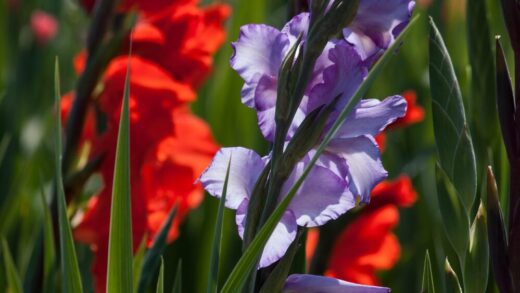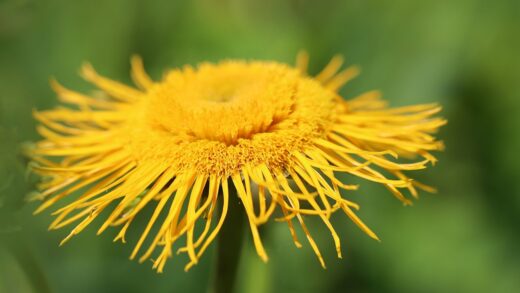Despite its reputation as a resilient and low-maintenance plant, the Madagascar periwinkle is not entirely immune to problems and can be susceptible to a range of diseases and pests. Proactive identification and management are key to maintaining the health and aesthetic appeal of these vibrant ornamentals. The most significant threats are typically fungal diseases, which thrive in the same warm and humid conditions that the plant itself enjoys. Understanding the conditions that favour these pathogens is the first step in prevention. Issues often arise from environmental stresses, such as improper watering, poor air circulation, or nutrient imbalances, which weaken the plant’s natural defences and make it an easier target for opportunistic invaders.
A vigilant gardener is the best line of defence against any potential health issues. Regularly inspecting the plants, including the tops and undersides of leaves as well as the stems and soil line, allows for the early detection of problems when they are most manageable. Catching a fungal outbreak or a pest infestation in its initial stages can make the difference between a minor setback and a total loss of the plant. A holistic approach that focuses on creating a healthy growing environment is far more effective than relying solely on chemical treatments after a problem has already taken hold.
The most prevalent diseases affecting Madagascar periwinkle are root and stem rots caused by water mould fungi like Phytophthora and Pythium. These diseases are almost always a direct result of overwatering and poorly draining soil. The plant’s intolerance for “wet feet” cannot be overstated, and cultural practices that promote good drainage and proper irrigation are the most critical preventative measures. Once a plant is severely infected with root rot, it is very difficult to save, making prevention the only truly effective strategy.
While less common, certain insect pests can also occasionally trouble the Madagascar periwinkle. Aphids, spider mites, and whiteflies may appear, particularly on plants that are stressed or grown in monocultures. These pests can cause damage by feeding on plant sap, leading to distorted growth and a decline in vigour. Fortunately, healthy, well-cared-for plants are generally more resistant to pest attacks, and several integrated pest management techniques can be employed to keep populations in check without resorting to harsh chemical pesticides.
Common fungal diseases
One of the most destructive diseases to affect Madagascar periwinkle is aerial Phytophthora, a fungal-like disease that causes stem lesions, leaf blight, and eventual plant collapse. The symptoms often begin as dark, water-soaked lesions on the stems, which rapidly expand and girdle the stem, causing everything above the lesion to wilt and die. This pathogen thrives in hot, wet conditions and is often spread by splashing water from rain or overhead irrigation. To prevent this disease, it is crucial to water at the base of the plant, avoid overcrowding to ensure good air circulation, and plant in well-draining soil.
More articles on this topic
Root rot, caused by various soil-borne fungi such as Pythium, Rhizoctonia, and Fusarium, is another major threat, particularly in poorly drained soils or overwatered containers. The initial symptoms appear above ground as wilting, yellowing of lower leaves, and stunted growth, which can be mistaken for a lack of water. However, an inspection of the roots will reveal that they are dark, mushy, and decayed instead of firm and white. Prevention is paramount and involves using sterile potting mix for containers, ensuring excellent drainage in all plantings, and allowing the soil to dry out between waterings.
Botrytis blight, also known as gray mould, is a fungal disease that typically attacks the flowers and buds, especially during prolonged periods of cool, damp weather. It appears as a fuzzy, grayish-brown mould on fading blossoms and can spread to the leaves and stems, causing them to rot. To manage botrytis, it is important to practice good garden sanitation by promptly removing and disposing of spent flowers and any diseased plant parts. Improving air circulation around the plants by giving them adequate space is also a key preventative measure.
Leaf spot diseases, caused by various fungi, can also occur, appearing as tan, brown, or black spots on the foliage. While usually not fatal, severe infections can be unsightly and may cause premature leaf drop, which weakens the plant. As with other fungal issues, these diseases are favoured by moisture on the leaves. Watering early in the day so that the foliage has time to dry before evening and avoiding overhead irrigation are effective cultural controls. In persistent cases, a fungicide may be warranted, but improving environmental conditions should always be the first course of action.
Identifying and managing pests
Aphids are among the most common pests that may infest Madagascar periwinkle. These small, soft-bodied insects are typically found in clusters on new growth, stems, and the undersides of leaves, where they use their piercing mouthparts to suck plant sap. A heavy infestation can cause leaves to curl, yellow, and become distorted, and can also lead to the production of a sticky substance called honeydew, which may attract sooty mould. For small populations, a strong jet of water from a hose can be effective at dislodging them. In more severe cases, applications of insecticidal soap or neem oil are excellent, low-toxicity control options.
More articles on this topic
Spider mites, particularly the two-spotted spider mite, can become a problem in hot, dry conditions. These tiny arachnids are difficult to see with the naked eye but their presence is often indicated by a fine, stippled or speckled pattern on the leaves and delicate webbing on the undersides of leaves and between stems. They thrive in the very conditions that Madagascar periwinkle loves, so vigilance is key during heatwaves. Increasing humidity around the plants by misting them can help to deter spider mites, and they can also be controlled with insecticidal soap or horticultural oil, ensuring thorough coverage of the leaf undersides.
Whiteflies are another sap-sucking insect that can occasionally be found on Madagascar periwinkle, especially in greenhouse settings or very warm climates. These tiny, moth-like insects will fly up in a cloud when a plant is disturbed. Like aphids, they excrete honeydew and can cause yellowing and stunting of the plant. Yellow sticky traps are a useful tool for monitoring and trapping adult whiteflies. For control, insecticidal soap and neem oil are effective, but multiple applications may be necessary to manage the different life stages of the pest.
While less common, caterpillars and slugs can also cause feeding damage to the leaves and flowers. Caterpillars will chew holes in the leaves, while slugs and snails leave behind ragged edges and characteristic slime trails. Caterpillars can often be managed by simply hand-picking them off the plants. For slugs and snails, setting out traps or using commercially available slug baits can be effective. Maintaining a clean garden environment free of debris where these pests can hide is also a helpful preventative measure.
Preventative strategies
The most effective approach to managing diseases and pests on Madagascar periwinkle is to focus on prevention through strong cultural practices. This begins with selecting a proper planting site that provides the full sun, warmth, and well-draining soil that the plant needs to thrive. A healthy, vigorous plant is inherently more resistant to problems than a plant that is stressed by poor growing conditions. Avoid planting in low-lying areas where water collects or in heavy clay soil that has not been adequately amended to improve its drainage.
Proper spacing is a simple yet crucial preventative strategy. When plants are spaced according to their mature size, it allows for ample air circulation around the foliage. This good airflow helps leaves to dry quickly after rain or irrigation, creating an environment that is less hospitable to the fungal spores that cause diseases like aerial Phytophthora and botrytis. Overcrowding plants may create a lush, full look initially, but it significantly increases the risk of a disease outbreak that can spread rapidly from plant to plant.
Your watering technique plays a direct role in disease prevention. As mentioned, watering the soil at the base of the plant rather than wetting the foliage is a key practice. Use a watering can, soaker hose, or drip irrigation to deliver water directly to the root zone. If you must use a sprinkler, do so early in the morning so that the sun and wind have plenty of time to dry the leaves before nightfall. Consistently allowing the soil surface to dry out between waterings also helps to disrupt the life cycle of soil-borne pathogens.
Finally, practicing good garden sanitation is essential. Regularly remove any yellowing or dead leaves, spent flowers, and any plant parts that show signs of disease. This material should be disposed of away from the garden, not added to a compost pile where pathogens could potentially survive and spread. At the end of the growing season, remove all plant debris from the garden bed to reduce the amount of fungal inoculum that can overwinter and cause problems in the following year.
Integrated pest management
Integrated Pest Management (IPM) is a sustainable and environmentally sensitive approach to dealing with pests that can be effectively applied to Madagascar periwinkle. The core principle of IPM is to use a combination of control methods rather than relying on a single tactic, with a focus on preventing problems before they start. The first level of IPM is cultural control, which involves creating a healthy environment for your plants through proper watering, fertilization, spacing, and sanitation, as described in the preventative strategies. A healthy plant is the best defence.
The next step in an IPM program is mechanical or physical control. This involves physically removing pests from the plants. This can be as simple as hand-picking caterpillars, using a strong spray of water to knock off aphids, or setting up sticky traps to monitor and capture flying insects like whiteflies. These methods are non-toxic and can be very effective, especially when pest populations are low and have been detected early. Regular monitoring of your plants is what makes these mechanical controls feasible.
Biological control is another important component of IPM, which involves using the pests’ natural enemies to keep their populations in check. You can encourage beneficial insects like ladybugs, lacewings, and hoverflies, which are voracious predators of aphids, by planting a diversity of flowering plants and avoiding the use of broad-spectrum chemical pesticides. In some cases, you can even purchase and release these beneficial insects into your garden to help manage a specific pest problem.
The use of chemical pesticides is considered the last resort in an IPM program. If a pest problem becomes severe and other methods have failed, choose the least toxic pesticide available that will be effective against the target pest while minimizing harm to beneficial insects and the environment. Products like insecticidal soaps, horticultural oils, and neem oil are generally preferred over broad-spectrum synthetic insecticides. Always read and follow the label instructions carefully when using any pesticide product.


















